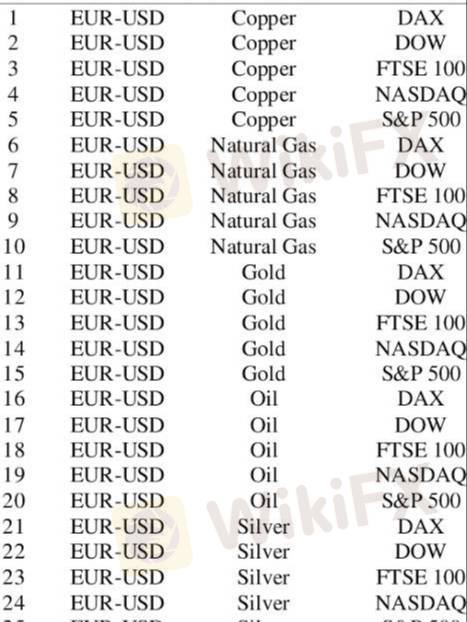
2025-04-28 12:48
IndustryPredictive models for FXintervention risk
#CurrencyPairPrediction
Predictive models for Forex (FX) intervention risk aim to forecast the likelihood and timing of central bank intervention in the currency markets. These interventions are typically carried out to manage exchange rate volatility, achieve specific currency levels, or influence monetary policy transmission. Accurate prediction of intervention risk is valuable for traders, investors, and policymakers alike.
Several factors and methodologies are employed in constructing these predictive models. Economic indicators play a crucial role. Significant deviations of a currency's exchange rate from its perceived fair value (often assessed through purchasing power parity or other equilibrium models), rapid or disorderly exchange rate movements, and levels of foreign exchange reserves are key triggers that central banks often consider. Models might incorporate thresholds for these indicators, signaling increased intervention probability when breached.
Market-based indicators also provide valuable insights. Increased implied volatility in currency options markets can suggest a higher likelihood of central bank action to stabilize the currency. Similarly, significant net speculative positions in the currency futures market might prompt intervention if the central bank deems the positioning excessive or destabilizing. The behavior of the currency relative to its trading partners or within a specific trading band (if one is implicitly or explicitly in place) is also closely monitored.
Central bank communication is another critical element. Analyzing official statements, speeches by policymakers, and minutes of monetary policy meetings can offer clues about the central bank's tolerance for currency movements and its willingness to intervene. Explicit or implicit warnings about potential intervention can significantly influence market expectations and reduce the need for actual intervention.
Historical intervention patterns are often studied to identify the conditions under which a particular central bank has intervened in the past. Machine learning techniques, such as logistic regression, decision trees, or neural networks, can be trained on historical data of economic indicators, market conditions, and central bank communication to predict the probability of intervention under similar circumstances.
Econometric models, including time series analysis and event studies, can be used to assess the relationship between various factors and the occurrence of interventions. These models can help quantify the impact of specific triggers on intervention probability.
It's important to note that predicting FX intervention risk is not an exact science. Central banks often maintain a degree of discretion and may act unexpectedly. Moreover, the effectiveness of interventions can vary depending on market conditions and the credibility of the central bank. Therefore, predictive models should be viewed as tools to assess probabilities and inform trading strategies or policy decisions, rather than definitive forecasts. Continuous monitoring of market dynamics and central bank signals is crucial for adapting to the evolving risk of intervention.
Like 0
danny9648
Trader
Hot content
Industry
Event-A comment a day,Keep rewards worthy up to$27
Industry
Nigeria Event Giveaway-Win₦5000 Mobilephone Credit
Industry
Nigeria Event Giveaway-Win ₦2500 MobilePhoneCredit
Industry
South Africa Event-Come&Win 240ZAR Phone Credit
Industry
Nigeria Event-Discuss Forex&Win2500NGN PhoneCredit
Industry
[Nigeria Event]Discuss&win 2500 Naira Phone Credit
Forum category

Platform

Exhibition

Agent

Recruitment

EA

Industry

Market

Index
Predictive models for FXintervention risk
 Thailand | 2025-04-28 12:48
Thailand | 2025-04-28 12:48#CurrencyPairPrediction
Predictive models for Forex (FX) intervention risk aim to forecast the likelihood and timing of central bank intervention in the currency markets. These interventions are typically carried out to manage exchange rate volatility, achieve specific currency levels, or influence monetary policy transmission. Accurate prediction of intervention risk is valuable for traders, investors, and policymakers alike.
Several factors and methodologies are employed in constructing these predictive models. Economic indicators play a crucial role. Significant deviations of a currency's exchange rate from its perceived fair value (often assessed through purchasing power parity or other equilibrium models), rapid or disorderly exchange rate movements, and levels of foreign exchange reserves are key triggers that central banks often consider. Models might incorporate thresholds for these indicators, signaling increased intervention probability when breached.
Market-based indicators also provide valuable insights. Increased implied volatility in currency options markets can suggest a higher likelihood of central bank action to stabilize the currency. Similarly, significant net speculative positions in the currency futures market might prompt intervention if the central bank deems the positioning excessive or destabilizing. The behavior of the currency relative to its trading partners or within a specific trading band (if one is implicitly or explicitly in place) is also closely monitored.
Central bank communication is another critical element. Analyzing official statements, speeches by policymakers, and minutes of monetary policy meetings can offer clues about the central bank's tolerance for currency movements and its willingness to intervene. Explicit or implicit warnings about potential intervention can significantly influence market expectations and reduce the need for actual intervention.
Historical intervention patterns are often studied to identify the conditions under which a particular central bank has intervened in the past. Machine learning techniques, such as logistic regression, decision trees, or neural networks, can be trained on historical data of economic indicators, market conditions, and central bank communication to predict the probability of intervention under similar circumstances.
Econometric models, including time series analysis and event studies, can be used to assess the relationship between various factors and the occurrence of interventions. These models can help quantify the impact of specific triggers on intervention probability.
It's important to note that predicting FX intervention risk is not an exact science. Central banks often maintain a degree of discretion and may act unexpectedly. Moreover, the effectiveness of interventions can vary depending on market conditions and the credibility of the central bank. Therefore, predictive models should be viewed as tools to assess probabilities and inform trading strategies or policy decisions, rather than definitive forecasts. Continuous monitoring of market dynamics and central bank signals is crucial for adapting to the evolving risk of intervention.
Like 0
I want to comment, too
Submit
0Comments

There is no comment yet. Make the first one.

Submit
There is no comment yet. Make the first one.